Introduction
As businesses increasingly rely on cloud-based solutions to streamline operations and drive growth, the importance of effective monitoring of Software as a Service (SaaS) applications has never been more pronounced. Organizations face a myriad of challenges, including:
- Performance optimization
- Security threats
- Compliance with stringent regulations
All while navigating a rapidly evolving technological landscape. With substantial investments in SaaS applications—ranging from $1,000 to $3,500 annually per employee—companies must ensure that their monitoring solutions are robust enough to protect their interests and maintain operational integrity.
This article delves into the essential aspects of SaaS monitoring solutions, exploring:
- Key features
- Security challenges
- Real-world applications
- A comparative analysis of leading tools
Providing organizations with the insights needed to enhance their SaaS strategies and achieve sustainable success.
Understanding SaaS Monitoring Solutions: An Overview
SaaS monitoring solutions are essential tools that oversee and manage the performance, availability, and security of cloud applications. As organizations increasingly depend on cloud-based services to drive critical business operations, the importance of SaaS monitoring solutions cannot be overstated. These SaaS monitoring solutions empower businesses to meticulously track application performance metrics, swiftly identify potential issues, and maintain compliance with service level agreements (SLAs).
In light of the significant rise in tech layoffs—262,735 in 2023, marking a 59% increase from 2022—it is imperative for organizations to ensure that their software applications are performing optimally to safeguard their operational integrity. Cody Slingerland observes that together, two areas represent 82% of the global cloud computing market, emphasizing the extensive growth of the software-as-a-service model. Furthermore, during the pandemic, software-as-a-service tools played a crucial role in supporting remote work and digital operations, underscoring their relevance in today's business landscape.
However, the software-as-a-service sector faces challenges such as cyber-attacks and misconfigurations, which have been linked to 63% of security incidents. This highlights the need for strong SaaS monitoring solutions to mitigate risks and fully harness the potential of cloud technology.
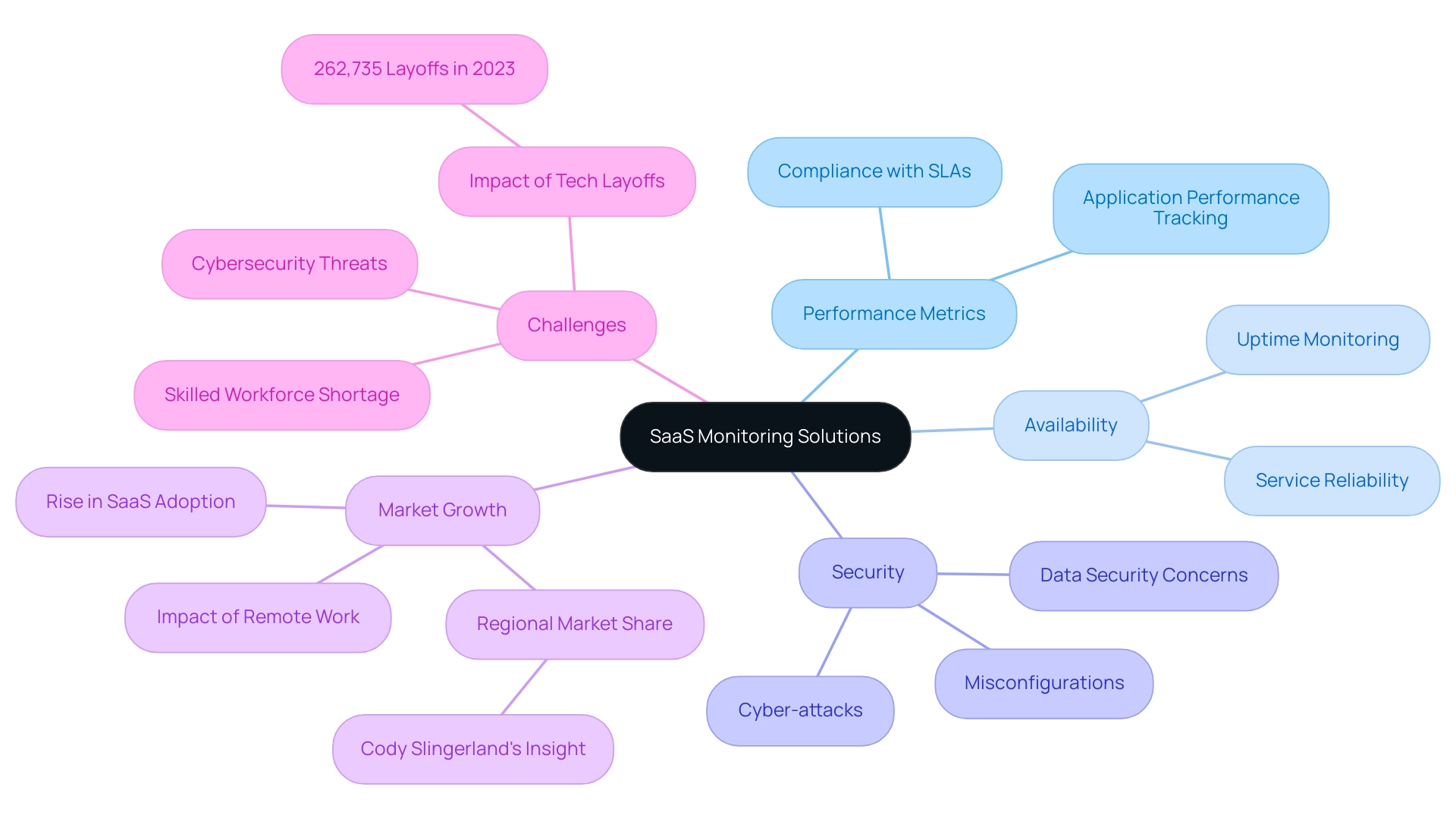
Key Features to Consider in SaaS Monitoring Tools
Choosing suitable SaaS monitoring solutions requires a thorough assessment of various essential characteristics that can greatly influence operational efficiency and user satisfaction. First and foremost, performance metrics are essential for SaaS monitoring solutions, delivering insights into application uptime and response times, which are vital for maintaining service reliability. User experience evaluation plays a pivotal role by tracking user interactions and satisfaction levels, and SaaS monitoring solutions provide organizations with the necessary data to enhance their offerings.
Notably, 31% of SaaS monitoring solutions involve maintaining compliance and security, underscoring their importance in the selection process. Integration capabilities are another essential feature of SaaS monitoring solutions, as they ensure seamless connectivity with other systems and platforms, facilitating a holistic view of operations. Furthermore, SaaS monitoring solutions with customizable dashboards and robust alerting systems are indispensable for proactive issue resolution, enabling teams to respond swiftly to potential disruptions.
As emphasized by SaaStr, in 2021, there were over 337 software unicorns and 15 decacorns in the US, illustrating the swift expansion and importance of the software market. A practical example of efficient software solutions can be found in the case study titled 'The Power of SaaS for Finance Teams,' which illustrates how cloud technologies are transforming finance operations by automating processes and enhancing data accuracy. With the right SaaS monitoring solutions, organizations can foster improved user experiences while optimizing their infrastructure management strategies.
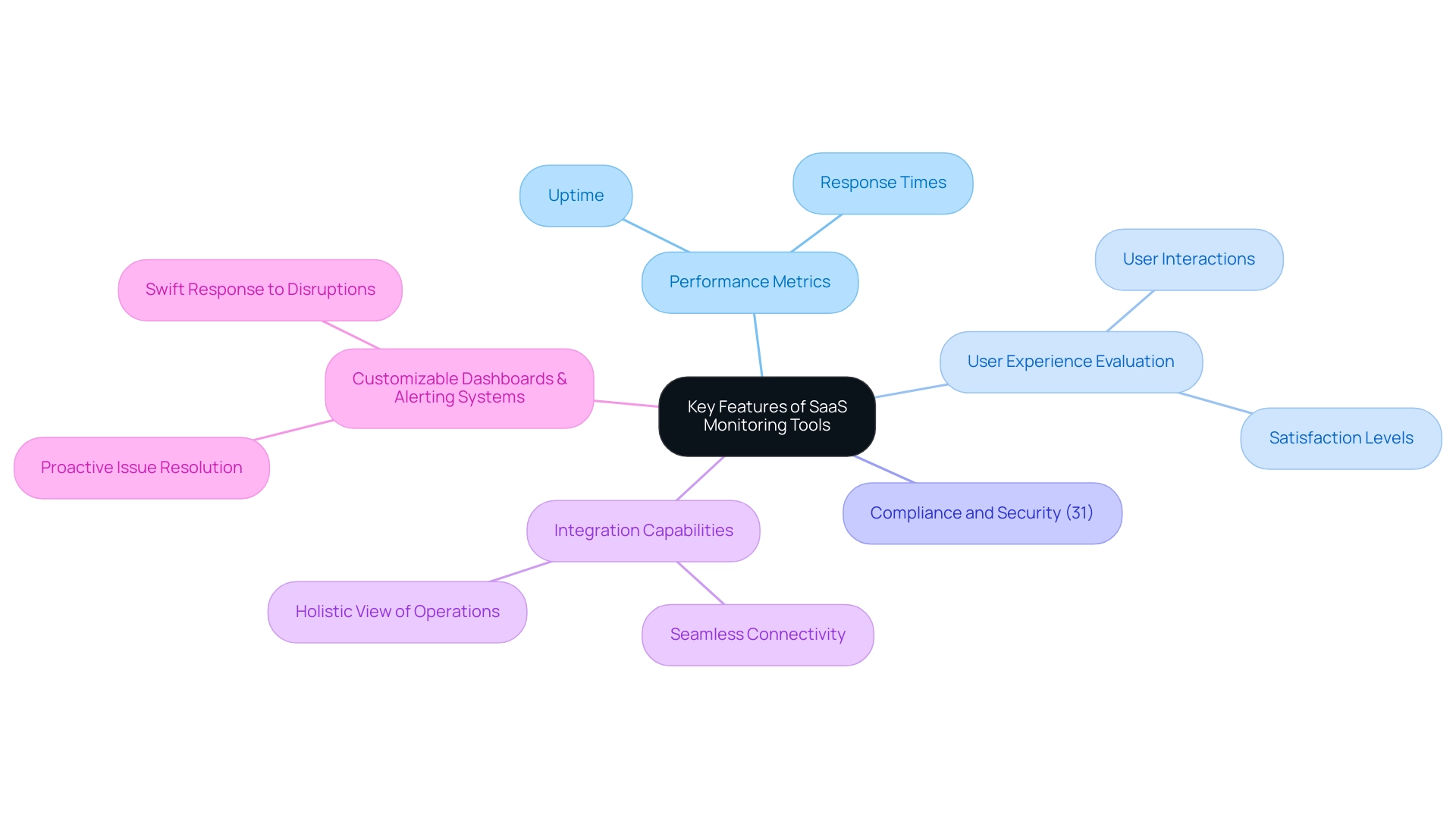
Navigating Security Challenges in SaaS Monitoring
Cloud-based environments pose unique challenges related to data breaches, unauthorized access, and compliance risks. The 'State of Software as a Service Security 2024' report provides critical insights, revealing that security breaches in cloud applications are escalating, prompting organizations to reassess their security postures. Notably, the report analyzed over 6,600 SaaS environments from more than 50 enterprises, underscoring the widespread nature of these challenges.
Effective SaaS monitoring solutions are indispensable in combatting these issues, providing real-time visibility into user activities and application performance. Organizations should prioritize SaaS monitoring solutions that include essential protective features, such as:
- Data encryption
- User authentication
- Anomaly detection
As emphasized in the joint statement by Snowflake, CrowdStrike, and Mandiant, "We have not identified evidence suggesting this activity was caused by a vulnerability, misconfiguration, or breach of Snowflake’s platform…This appears to be a targeted campaign directed at users with single-factor authentication.” This highlights the vulnerabilities associated with inadequate protective measures.
Furthermore, regular audits and compliance checks are vital for ensuring adherence to industry regulations. The recent US Executive Order on Cybersecurity reinforces this urgency, advocating for the adoption of modern protective practices such as multi-factor authentication and encryption. This executive order emphasizes the significance of safeguarding cloud services and embracing contemporary protective measures.
By incorporating safeguards into their oversight strategies, organizations can significantly reduce the risks linked to software-as-a-service applications, which in turn enhances their SaaS monitoring solutions to better safeguard sensitive information and uphold compliance.
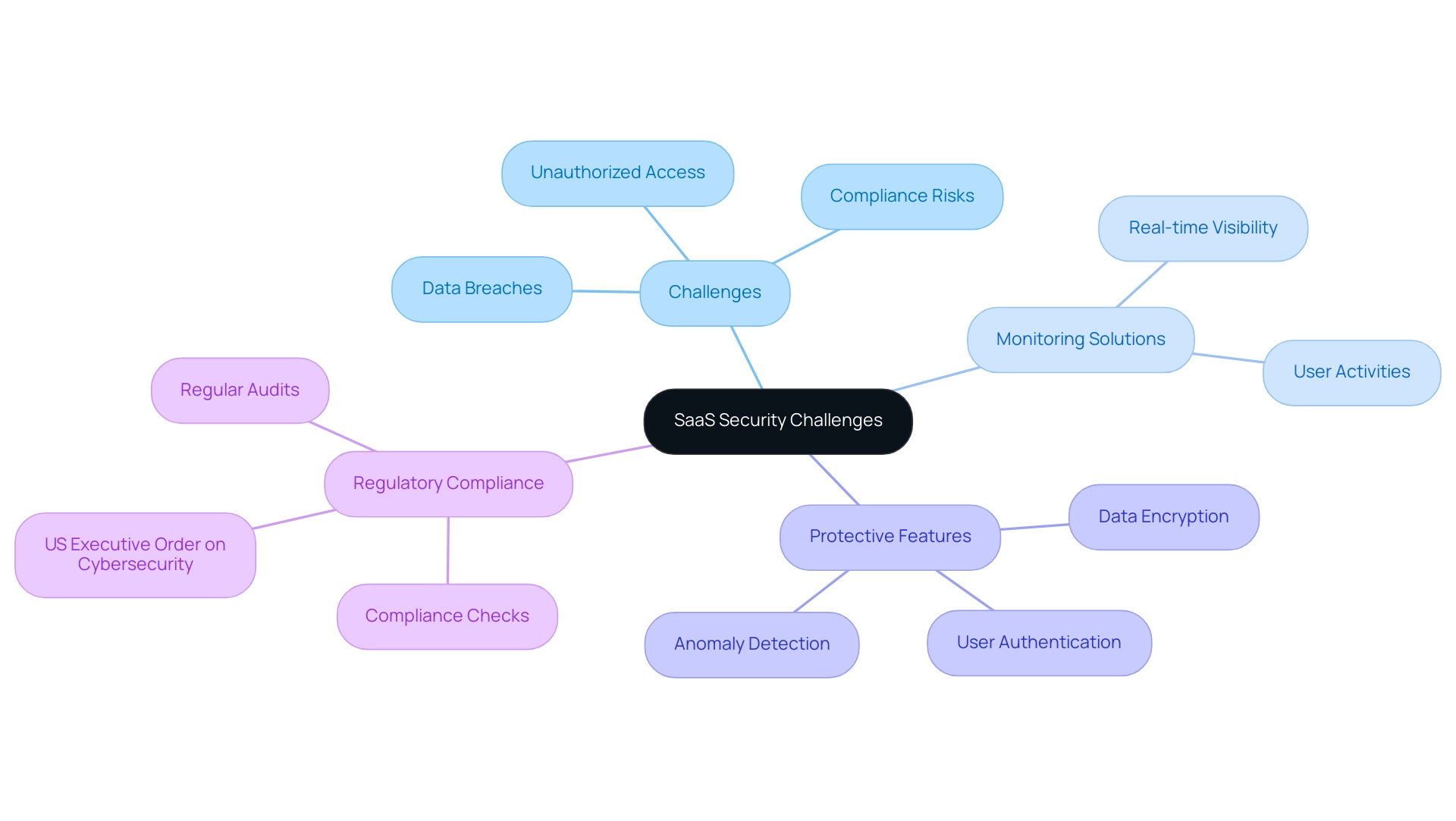
Real-World Applications of SaaS Monitoring Solutions
Organizations across different sectors are increasingly adopting saas monitoring solutions to enhance operational efficiency and strengthen security protocols. In the financial services industry, for instance, a prominent company adopted sophisticated oversight systems to carefully measure transaction processing durations, guaranteeing compliance with strict regulatory requirements. This approach not only mitigates risks but also enhances customer trust through transparency.
In parallel, marketing agencies harness these solutions to scrutinize user engagement metrics across multiple campaigns. This data-driven analysis empowers teams to make informed decisions that optimize performance and increase return on investment. According to industry insights, companies employing software solutions effectively can experience a significant reduction in downtime and operational expenses, positioning them advantageously in a competitive landscape.
Additionally, with 29% of participants suggesting they would switch at least one of their cloud providers in the next two years, the function of saas monitoring solutions becomes vital for preserving provider relationships and guaranteeing operational stability. As Google, the fastest-growing software-as-a-service provider, highlights the significance of saas monitoring solutions, it becomes evident that efficient oversight resources are vital for managing the intricacies of cloud services, where saas monitoring solutions play a crucial role in addressing the greatest expense associated with software-as-a-service. These oversight solutions will become pivotal in driving performance improvements and supporting strategic organizational initiatives.
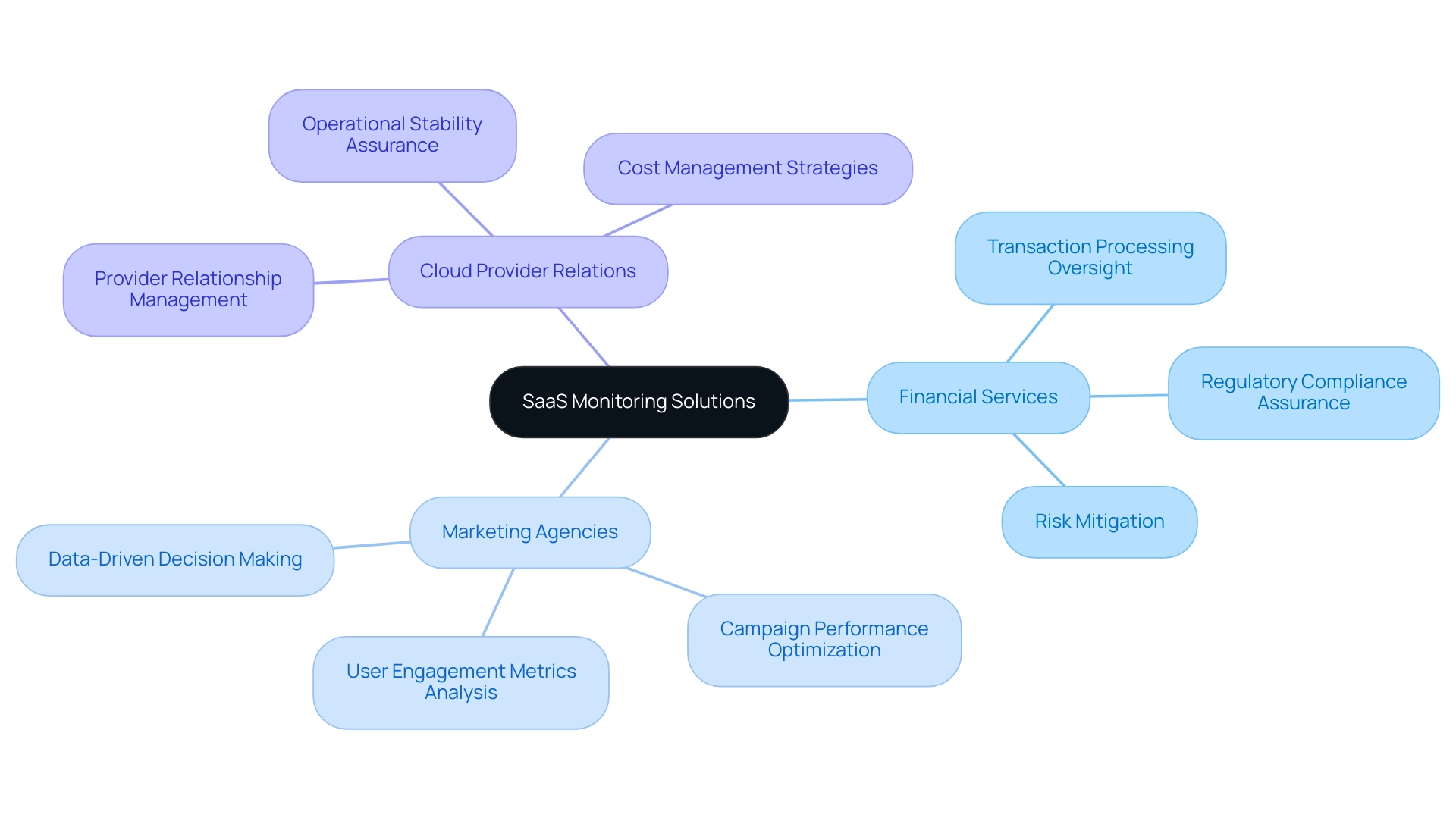
Comparative Analysis of Leading SaaS Monitoring Tools
The current landscape of saas monitoring solutions presents a variety of options, each distinguished by its unique strengths and weaknesses. For instance, Tool A is recognized for its robust performance metrics and a highly intuitive user interface, making it appealing for users seeking straightforward functionality. However, it may fall short in providing advanced protection features critical for many organizations today.
On the other hand, Tool B stands out for its exceptional integration capabilities and superior user experience assessment, though it tends to carry a higher price tag, which may be a consideration for budget-conscious businesses. Tool C, while offering comprehensive security features essential in today's cyber environment, has been noted for its less user-friendly interface, potentially impacting user adoption rates. As organizations navigate a marketplace that has seen a staggering 262,735 tech layoffs in 2023—a 59% increase over the previous year—deciding on an effective saas monitoring solutions becomes crucial.
According to CloudEagle, organizations allocate between $1,000 and $3,500 each year per employee on software applications, highlighting the importance of making informed decisions. This substantial investment highlights the need for rigorous evaluation of these resources in terms of functionalities, pricing structures, and user reviews. By doing so, organizations can identify the solution that best aligns with their strategic objectives and operational needs.
Furthermore, the advantages of software as a service adoption are significant; case studies indicate that 70% of CIOs cite agility and scalability as key reasons for choosing this model, with 86% of businesses reporting positive employee experiences and the ability to deploy new services 40% faster. This comparative analysis is vital for ensuring that investments in saas monitoring solutions yield the desired outcomes in agility, employee engagement, and service deployment speed, especially considering these critical factors in today's competitive landscape. Additionally, insights from Zscaler's revenue segmentation can further inform organizations about market trends and customer types, enhancing their decision-making process.
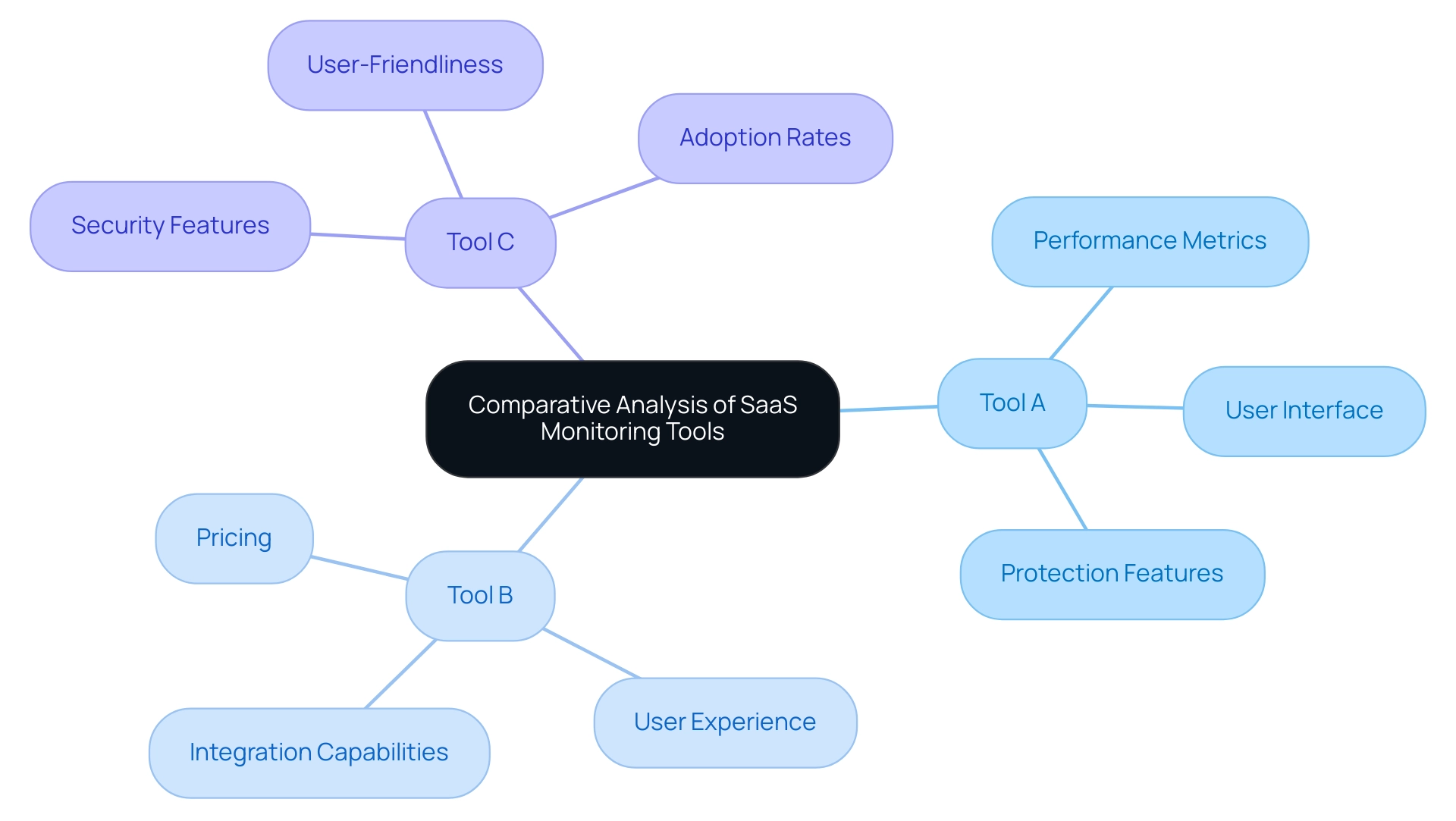
Conclusion
SaaS monitoring solutions are essential for organizations navigating the complexities of cloud-based services. The article highlights the significance of these tools in ensuring optimal performance, security, and compliance with regulations. By focusing on key features such as:
- performance metrics
- user experience monitoring
- integration capabilities
businesses can select the right solutions to enhance operational efficiency and mitigate risks.
Moreover, the rising security challenges faced by SaaS applications necessitate robust monitoring strategies that incorporate essential security features. As evidenced by real-world applications, organizations across various sectors are leveraging SaaS monitoring tools to improve operational effectiveness and maintain customer trust. The comparative analysis of leading tools underscores the importance of making informed decisions based on:
- functionality
- pricing
- user experience
In conclusion, the effective monitoring of SaaS applications is not merely an operational necessity but a strategic imperative. As organizations invest significantly in these technologies, the right monitoring solutions can protect their interests and drive sustainable growth. By prioritizing robust monitoring strategies, businesses can navigate the ever-evolving technological landscape and position themselves for long-term success.




